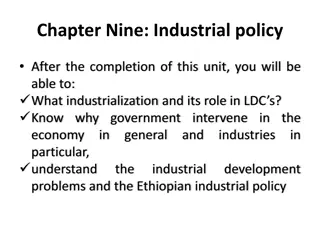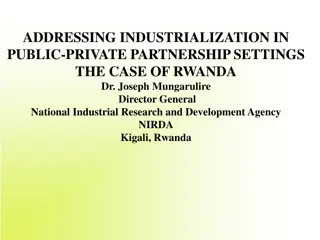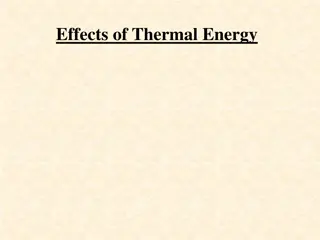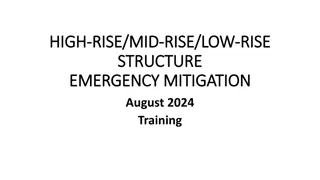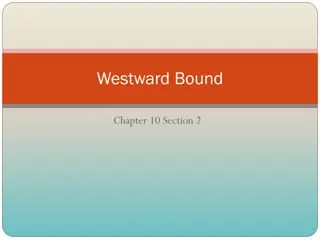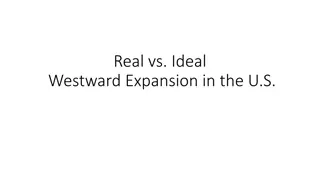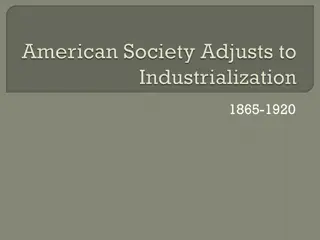
The Rise of Industrialization and Westward Expansion
The rise of industrialization in the West led to a surge in mining activities, attracting people from all over the world. Miners hoped to strike rich in gold and silver, leading to the rapid development of mining towns and boomtowns. The construction of the Transcontinental Railroad played a crucial role in connecting the nation and driving industrial growth. However, this rapid expansion also intensified the demand for Native American land and had significant social and economic impacts on the region.
Uploaded on | 0 Views
Download Presentation

Please find below an Image/Link to download the presentation.
The content on the website is provided AS IS for your information and personal use only. It may not be sold, licensed, or shared on other websites without obtaining consent from the author. If you encounter any issues during the download, it is possible that the publisher has removed the file from their server.
You are allowed to download the files provided on this website for personal or commercial use, subject to the condition that they are used lawfully. All files are the property of their respective owners.
The content on the website is provided AS IS for your information and personal use only. It may not be sold, licensed, or shared on other websites without obtaining consent from the author.
E N D
Presentation Transcript
The Rise of Industrialization Westward Expansion
Miners Hope to Strike Rich Mining was first great boom in the west Gold and silver attracted people from around the world
Miners Hope to Strike Rich When gold was discovered, people began to pour into the area Area usually ill-prepared for their arrival Mining camps spring up to house miners Others saw opportunity to make fortunes by selling supplies to miners
Miners Hope to Strike Rich As towns grow, marshals and sheriffs hired to keep the peace Many mining towns were boomtowns - thrived only as long as the gold supply held out Many boomtowns became abandoned when the precious metals disappeared
The Transcontinental Railroad As industry in West grew, need of transport grew Arguments over placement of railroad delayed construction of a transcontinental railroad
The Transcontinental Railroad Unlike Europe, US expected railroads to be built by private enterprise Two ways Congress supported railroad construction: Provided money in the form of loans Made land grants- gave builders wide stretches of land on track route
The Transcontinental Railroad 1863: Central Pacific starts in Sacramento, California laying track east Union Pacific lays track west from Omaha Nebraska
The Transcontinental Railroad Central Pacific Company brought workers from China to build railroad Extremely harsh working conditions Little regard paid to workers safety Irish immigrants built track for Union Pacific Tracks met in Promontory, Utah in 1869
Effects of Railroad Railroad tied the nation together Moved products and people, spurred industrial development Stimulated growth of towns and cities along the railroad Intensified demand for Native American land Brought tides of people into Mexican American communities of the Southwest
The Homestead Act Great Plains last area to be heavily settled by white people Homestead Act 1862- US government offered farm plots of 160 acres to anyone willing to live on the land for five years Must dig a well and build a road
The Homestead Act Many settlers were former slaves who fled the South after Reconstruction Homesteading life was difficult Windstorms, blizzards, droughts, etc.



